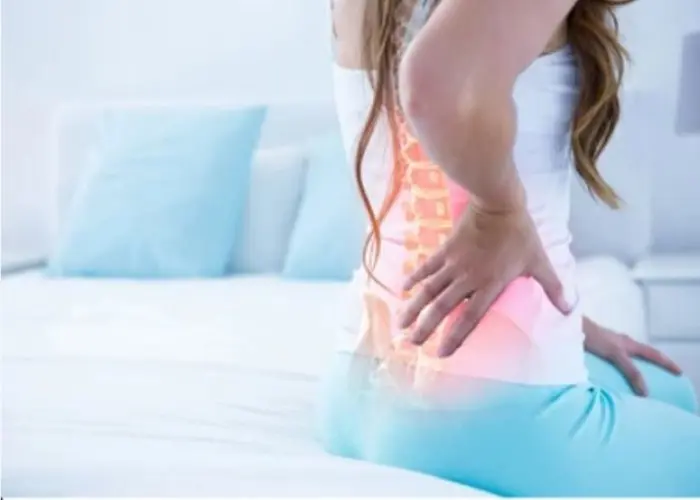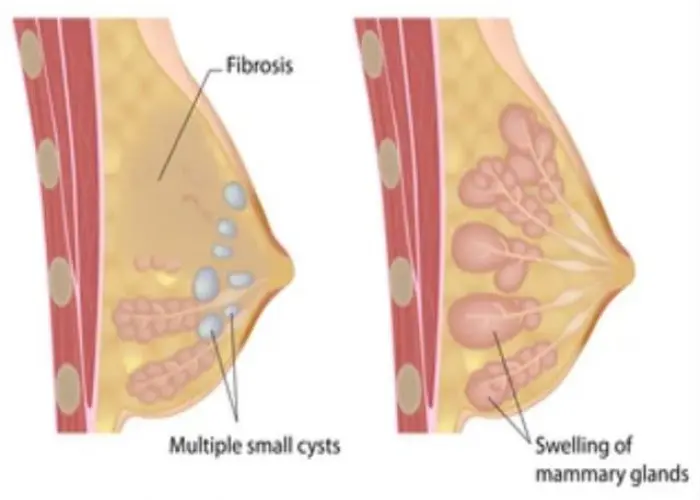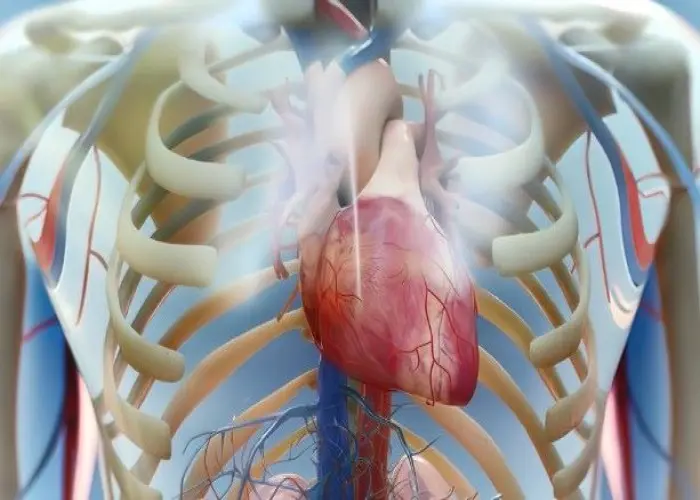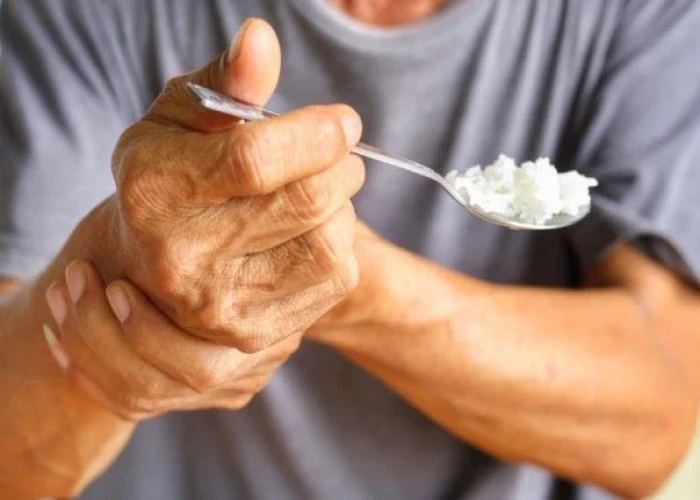 Welcome
Welcome
“May all be happy, may all be healed, may all be at peace and may no one ever suffer."
Back pain

Back pain is a common symptom that can have various causes, such as muscle strains, herniated discs, osteoarthritis, or spinal stenosis. Treatment may include rest, physical therapy, pain relief medication, or surgery in severe cases. It is important to consult a healthcare provider to determine the underlying cause and appropriate treatment for your specific case of back pain.
Research Papers
Disease Signs and Symptoms
- Weakness
- Numbness
- Weight loss
- Numbness or tingling sensation
- Bladder problems
- Back pain
Disease Causes
Back pain
Back pain often develops without a cause that your doctor can identify with a test or an imaging study. Conditions commonly linked to back pain include:
- Muscle or ligament strain. Repeated heavy lifting or a sudden awkward movement can strain back muscles and spinal ligaments. If you're in poor physical condition, constant strain on your back can cause painful muscle spasms.
- Bulging or ruptured disks. Disks act as cushions between the bones (vertebrae) in your spine. The soft material inside a disk can bulge or rupture and press on a nerve. However, you can have a bulging or ruptured disk without back pain. Disk disease is often found incidentally when you have spine X-rays for some other reason.
- Arthritis. Osteoarthritis can affect the lower back. In some cases, arthritis in the spine can lead to a narrowing of the space around the spinal cord, a condition called spinal stenosis.
- Osteoporosis. Your spine's vertebrae can develop painful fractures if your bones become porous and brittle.
Disease Prevents
Back pain
You might avoid back pain or prevent its recurrence by improving your physical condition and learning and practicing proper body mechanics.
To keep your back healthy and strong:
- Exercise. Regular low-impact aerobic activities — those that don't strain or jolt your back — can increase strength and endurance in your back and allow your muscles to function better. Walking and swimming are good choices. Talk with your doctor about which activities you might try.
- Build muscle strength and flexibility. Abdominal and back muscle exercises, which strengthen your core, help condition these muscles so that they work together like a natural corset for your back.
- Maintain a healthy weight. Being overweight strains back muscles. If you're overweight, trimming down can prevent back pain.
- Quit smoking. Smoking increases your risk of low back pain. The risk increases with the number of cigarettes smoked per day, so quitting should help reduce this risk.
Avoid movements that twist or strain your back. Use your body properly:
- Stand smart. Don't slouch. Maintain a neutral pelvic position. If you must stand for long periods, place one foot on a low footstool to take some of the load off your lower back. Alternate feet. Good posture can reduce the stress on back muscles.
- Sit smart. Choose a seat with good lower back support, armrests and a swivel base. Placing a pillow or rolled towel in the small of your back can maintain its normal curve. Keep your knees and hips level. Change your position frequently, at least every half-hour.
- Lift smart. Avoid heavy lifting, if possible, but if you must lift something heavy, let your legs do the work. Keep your back straight — no twisting — and bend only at the knees. Hold the load close to your body. Find a lifting partner if the object is heavy or awkward.
Disease Treatments
Most back pain gets better within a month of home treatment. However, everyone is different, and back pain is a complex condition. For many, the pain doesn't go away for a few months, but only a few have persistent, severe pain.
Over-the-counter pain relievers and the use of heat might be all you need. Bed rest isn't recommended.
Continue your activities as much as you can tolerate. Try light activity, such as walking and activities of daily living. Stop activity that increases pain, but don't avoid activity out of fear of pain. If home treatments aren't working after several weeks, your doctor might suggest stronger medications or other therapies.
Medications
Depending on the type of back pain you have, your doctor might recommend the following:
- Over-the-counter (OTC) pain relievers. Nonsteroidal anti-inflammatory drugs (NSAIDs), such as ibuprofen (Advil, Motrin IB, others) or naproxen sodium (Aleve), may help relieve back pain. Take these medications only as directed by your doctor. Overuse can cause serious side effects. If OTC pain relievers don't relieve your pain, your doctor might suggest prescription NSAIDs.
- Muscle relaxants. If mild to moderate back pain doesn't improve with OTC pain relievers, your doctor might also prescribe a muscle relaxant. Muscle relaxants can make you dizzy and sleepy.
- Topical pain relievers. These products deliver pain relieving substances through your skin via creams, salves, ointments or patches.
- Narcotics. Drugs containing opioids, such as oxycodone or hydrocodone, may be used for a short time with close supervision by your doctor. Opioids don't work well for chronic pain, so your prescription will usually provide less than a week's worth of pills.
- Antidepressants. Some types of antidepressants — particularly duloxetine (Cymbalta) and tricyclic antidepressants, such as amitriptyline — have been shown to relieve chronic back pain independent of their effect on depression.
Physical therapy
A physical therapist can teach you exercises to increase your flexibility, strengthen your back and abdominal muscles, and improve your posture. Regular use of these techniques can help keep pain from returning. Physical therapists will also provide education about how to modify your movements during an episode of back pain to avoid flaring pain symptoms while continuing to be active.
Surgical and other procedures
Procedures used to treat back pain may include:
- Cortisone injections. If other measures don't relieve your pain, and if your pain radiates down your leg, your doctor may inject cortisone — a strong anti-inflammatory drug — plus a numbing medication into the space around your spinal cord (epidural space). A cortisone injection helps decrease inflammation around the nerve roots, but the pain relief usually lasts only a month or two.
- Radiofrequency neurotomy. In this procedure, a fine needle is inserted through your skin so the tip is near the area causing your pain. Radio waves are passed through the needle to damage the nearby nerves, which interferes with the delivery of pain signals to the brain.
- Implanted nerve stimulators. Devices implanted under your skin can deliver electrical impulses to certain nerves to block pain signals.
- Surgery. If you have unrelenting pain associated with radiating leg pain or progressive muscle weakness caused by nerve compression, you might benefit from surgery. These procedures are usually reserved for pain related to structural problems, such as narrowing of the spine (spinal stenosis) or a herniated disk, that hasn't responded to other therapy.
Disease Diagnoses
Disease Allopathic Generics
Disease Ayurvedic Generics
Disease Homeopathic Generics
Disease yoga
Back pain and Learn More about Diseases

Stuttering

Parvovirus infection

Peripheral nerve injuries

Breast cysts

Cardiac Failure

Trigeminal neuralgia

Parkinson's disease

Mitral valve stenosis
Back pain, Sciatica, Lower back pain, Herniated disc, Upper back pain, পিঠে ব্যাথা
To be happy, beautiful, healthy, wealthy, hale and long-lived stay with DM3S.
